Meidum ‘Collapsed’ Pyramid Of Great Builder Pharaoh Snefru
A. Sutherland - AncientPages.com - Pharaoh Snefru (Sneferu) was the founder of the 4th dynasty during the Old Kingdom.
Snefru is considered the greatest builder in Egyptian history, who reigned from around 2613 BC to 2589 BC, according to Manetho, an Egyptian priest, living in the third century BC.
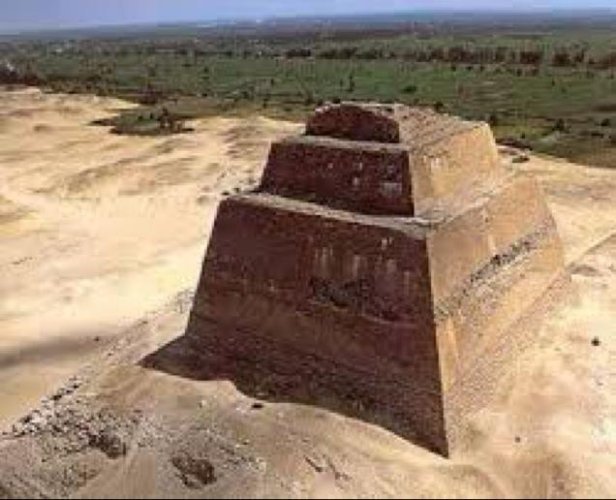
Some suggest the pyramid not to have collapsed until the New Kingdom, but there are a number of facts contradicting this theory. The Meidum Pyramid seems never to have been completed.
He built at least three pyramids that survive to this day and is also contributed with several innovations regarding design and construction of pyramids in ancient Egypt.
Snefru was born and grew up in the royal palace in Memphis, not far from modern city of Cairo. His father was King Huni, who was the last pharaoh of the Third Dynasty and his mother was a royal princess, Meresankh. It is believed she was Huni's sister.
Pharaohs were often wed to their sisters and it was nothing unusual in this ancient Egyptian tradition.
Snefru was the father of Khufu (2589-2566 BC), the 4th Dynasty Pharaoh who ruled during the first half of the Old Kingdom period. Khufu is widely accepted as the ruler who commissioned the Great
Pyramid of Giza, one of the Seven Wonders of the World.
These pyramids are the Red Pyramid, the Bent Pyramid, and the third one, Meidum Pyramid (also known as the ‘Collapsed' Pyramid. Inside the Bent Pyramid, an inscription with Snefru's name and a stela discovered by archaeologists alongside the neighboring, subsidiary pyramid shows Snofru himself.)
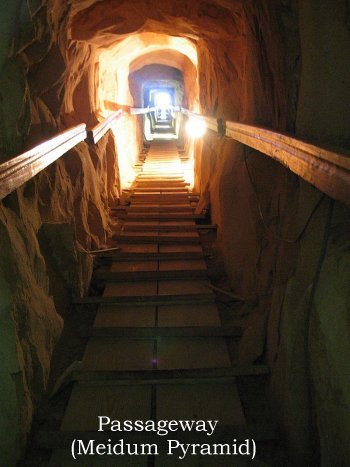 Despite the fact that a last ruler of the Dynasty III, pharaoh Huni and father of Snefru, erected the Meidum Pyramid, the structure was definitely completed by Snefru, most probably after his father’s death.
Despite the fact that a last ruler of the Dynasty III, pharaoh Huni and father of Snefru, erected the Meidum Pyramid, the structure was definitely completed by Snefru, most probably after his father’s death.
A Middle Kingdom papyrus recorded:
"The Majesty of King Huni died, and the Majesty of King Snofru was raised up as a benevolent King in this entire land."
The Meidum Pyramid can be found approximately 62 miles (100 km) south of modern Cairo 30 miles (48 km) south of Memphis.
It was 93m high and built with a 114m long square base. Its entrance, built about 30m above ground level, in the pyramid’s northern face, leads to a corridor descending for 54 meters. In its final form the structure stood about 311ft (95m) high.
The structure seems to have been planned to be a stepped pyramid, and its central square had to form both the nucleus and peak of the pyramid. Around it the builders added a succession of six layers around it, of which each was sloping at an angle of 75 degrees towards the structure's core. All layers were covered with white limestone, however, the last layer, therefore, rested not on solid rock but rather on three layers of limestone blocks and sand.
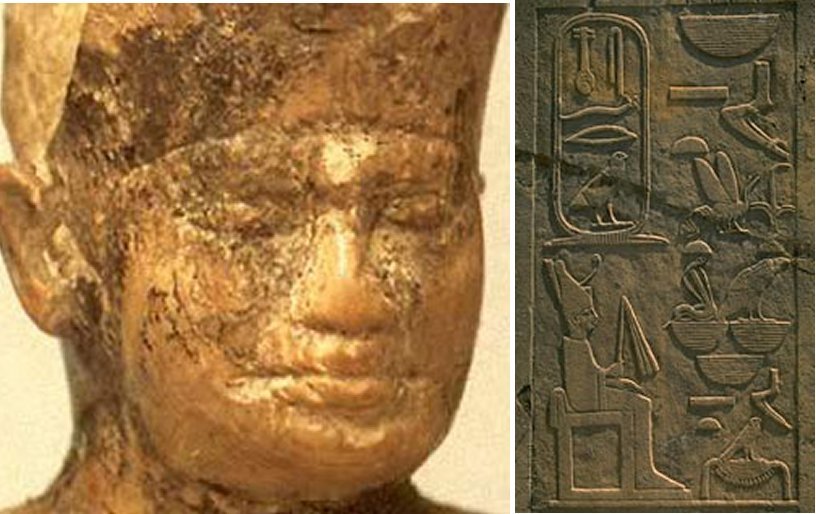
Left: Snefru, 1st King of Egypt's 4th Dynasty; Right: Stela depicting 4th Dynasty King Snofru. IMage via bbc.co.uk
The pyramid became unstable. Its heavy outer layers were completely ruined in antiquity. It is not exactly known when in antiquity this collapse happened. It is believed that the structure at least partially collapsed by the time of the New Kingdom, around 1550 BC.
See also:
Sobek - Enigmatic Crocodile God of Ancient Egypt
Ancient Egyptian Capital Tell El-Amarna Mapped Through Satellite Imagery System
Interesting Ancient Civilizations
What is important is, this pyramid-like structure seems never to have been completed.
For example, the mortuary temple, located under the rubble at the base of the pyramid, in fact, never was finished. Archaeologists have discovered that the temple’s two steles without inscriptions and the burial chamber inside the pyramid itself, has never been completed. Also wooden supports – usually removed after construction - have been found still in place.
Today, the Meidum 'Collapsed' Pyramid hardly resembles a pyramid.
Written by – A. Sutherland - AncientPages.com Senior Staff Writer
Copyright © AncientPages.com All rights reserved. This material may not be published, broadcast, rewritten or redistributed in whole or part without the express written permission of AncientPages.com
Expand for referencesMore From Ancient Pages
-
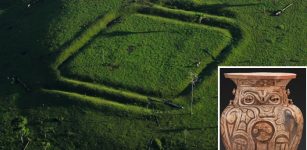 Were Mysterious Ancient Man-Made Earthworks In The Amazon Forest Ritual Communication Spaces?
Archaeology | Sep 6, 2017
Were Mysterious Ancient Man-Made Earthworks In The Amazon Forest Ritual Communication Spaces?
Archaeology | Sep 6, 2017 -
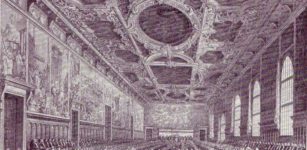 Ancient Societies Ruled By Ruthless Dictators – Collapsed
Civilizations | Oct 18, 2020
Ancient Societies Ruled By Ruthless Dictators – Collapsed
Civilizations | Oct 18, 2020 -
 Startling 3,000-Year-Old Gold Bowl Decorated With A Sun Motif Discovered Is A Truly Unique Artifact
Archaeology | Oct 17, 2021
Startling 3,000-Year-Old Gold Bowl Decorated With A Sun Motif Discovered Is A Truly Unique Artifact
Archaeology | Oct 17, 2021 -
 Spread Of Transeurasian Languages Was Due To Agriculture Study Reveals
Archaeology | Nov 10, 2021
Spread Of Transeurasian Languages Was Due To Agriculture Study Reveals
Archaeology | Nov 10, 2021 -
 Hazelnuts -‘Time Capsule’ To Reconstruct Landscape Of Ancient Forests In Sweden
Archaeology | Mar 5, 2024
Hazelnuts -‘Time Capsule’ To Reconstruct Landscape Of Ancient Forests In Sweden
Archaeology | Mar 5, 2024 -
 Cedar – Sacred Tree With Medicine Power In Native American Beliefs
Featured Stories | Aug 26, 2024
Cedar – Sacred Tree With Medicine Power In Native American Beliefs
Featured Stories | Aug 26, 2024 -
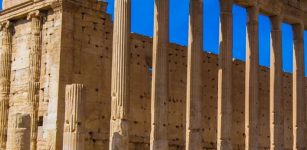 World-Famous Temple Of Bel In Palmyra, Syria – Digitally Reconstructed
News | Aug 22, 2020
World-Famous Temple Of Bel In Palmyra, Syria – Digitally Reconstructed
News | Aug 22, 2020 -
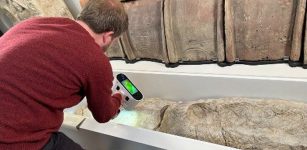 3D Scans Used To Study Mysterious Roman Burial Practice
Archaeology | Jun 5, 2023
3D Scans Used To Study Mysterious Roman Burial Practice
Archaeology | Jun 5, 2023 -
 European Dogs Doubled In Size From 8,000 To 2,000 Years Ago – New Study Shows
Archaeology | Jun 3, 2022
European Dogs Doubled In Size From 8,000 To 2,000 Years Ago – New Study Shows
Archaeology | Jun 3, 2022 -
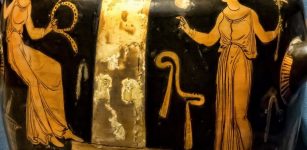 Apulian Secrets: Ancient Burial Rituals Shed Light On A Culture That Left No Written History
Archaeology | Jan 12, 2016
Apulian Secrets: Ancient Burial Rituals Shed Light On A Culture That Left No Written History
Archaeology | Jan 12, 2016 -
 Scylla And Charybdis – Legendary Greek Sea Monsters – Choosing The Lesser Of Two Evils
Featured Stories | Jan 15, 2021
Scylla And Charybdis – Legendary Greek Sea Monsters – Choosing The Lesser Of Two Evils
Featured Stories | Jan 15, 2021 -
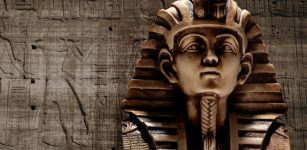 Unraveling Pharaohs’ True Knowledge Of Hieroglyphs – Could All Pharaohs Read And Write?
Featured Stories | Jun 22, 2022
Unraveling Pharaohs’ True Knowledge Of Hieroglyphs – Could All Pharaohs Read And Write?
Featured Stories | Jun 22, 2022 -
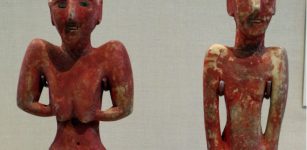 Male-Female Roles 7,000 Years Ago Were Less Traditional Than Previously Thought – New Study Reveals
Archaeology | Jun 30, 2022
Male-Female Roles 7,000 Years Ago Were Less Traditional Than Previously Thought – New Study Reveals
Archaeology | Jun 30, 2022 -
 Stolen Antique Tamil Nadu Statues Have Been Returned By Britain To India
Artifacts | Sep 23, 2020
Stolen Antique Tamil Nadu Statues Have Been Returned By Britain To India
Artifacts | Sep 23, 2020 -
 On This Day In History: ‘Bloody Sunday’ In Northern Ireland – On Jan 30, 1972
News | Jan 30, 2017
On This Day In History: ‘Bloody Sunday’ In Northern Ireland – On Jan 30, 1972
News | Jan 30, 2017 -
 Ancient Objects Used In Unknown Celtic Ritual Discovered In Polish Lake
Archaeology | Jul 22, 2024
Ancient Objects Used In Unknown Celtic Ritual Discovered In Polish Lake
Archaeology | Jul 22, 2024 -
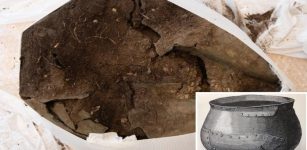 Rare Ancient Roman Cauldron Discovered In Central Norway
Archaeology | Sep 16, 2019
Rare Ancient Roman Cauldron Discovered In Central Norway
Archaeology | Sep 16, 2019 -
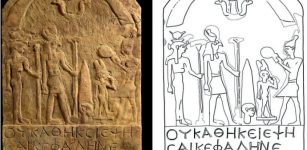 Shrine Discovered In Egyptian Temple And Evidence Of Previously Unknown Rituals
Archaeology | Oct 6, 2022
Shrine Discovered In Egyptian Temple And Evidence Of Previously Unknown Rituals
Archaeology | Oct 6, 2022 -
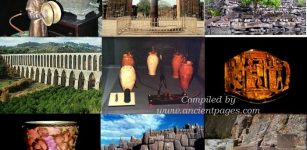 10 Remarkable Advanced Ancient Technologies Ahead Of Their Times
Ancient Technology | Jul 23, 2019
10 Remarkable Advanced Ancient Technologies Ahead Of Their Times
Ancient Technology | Jul 23, 2019 -
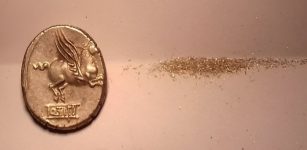 Romans Were Early Pioneers Of Recycling – New Evidence Reveals
Archaeology | Oct 17, 2023
Romans Were Early Pioneers Of Recycling – New Evidence Reveals
Archaeology | Oct 17, 2023
